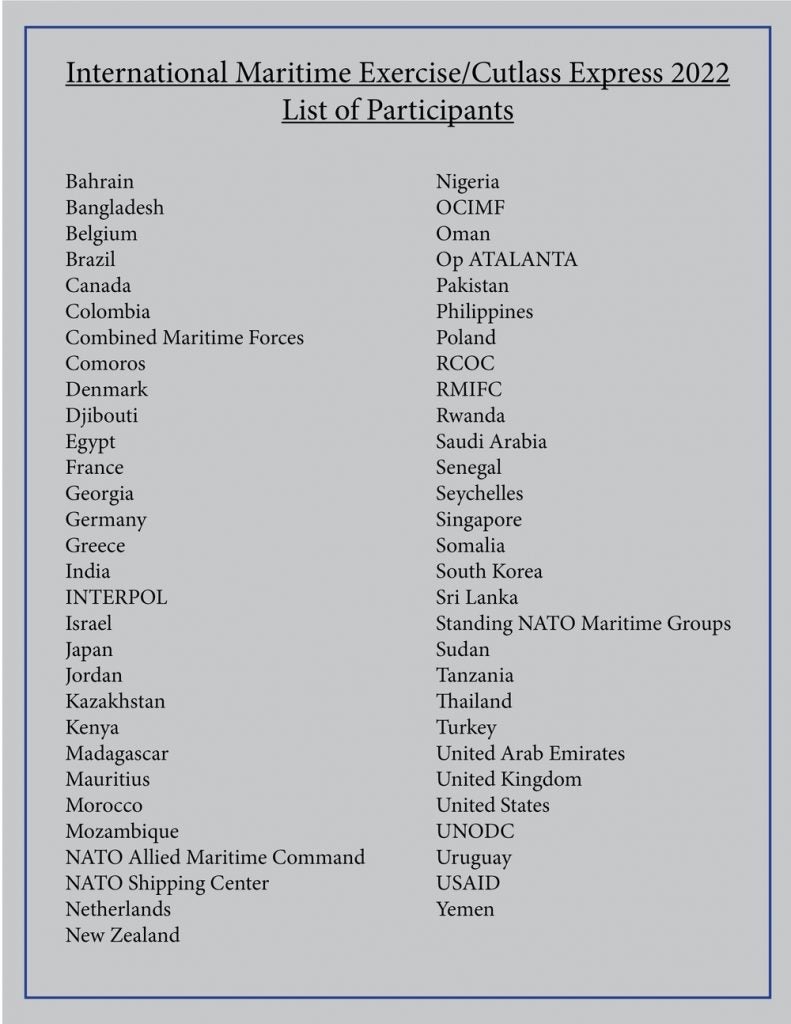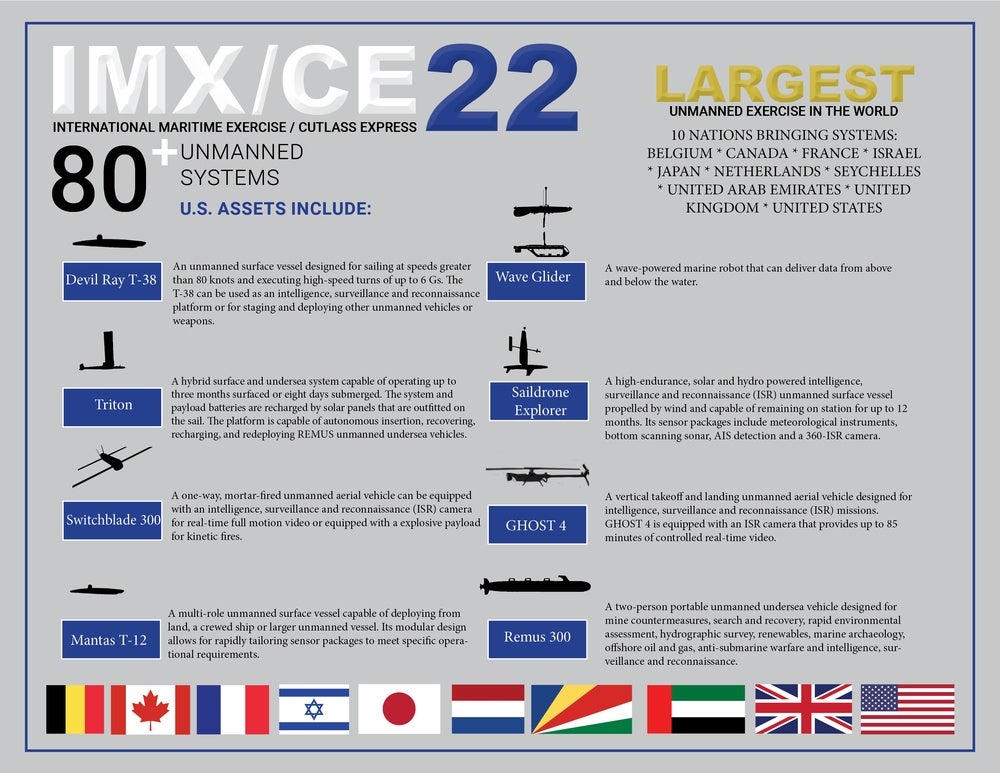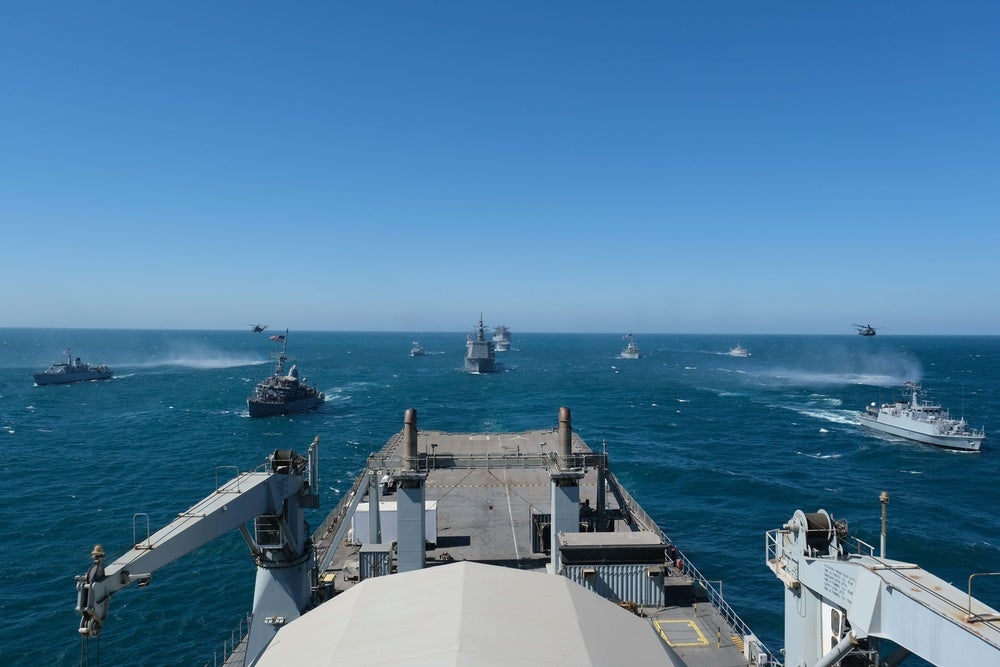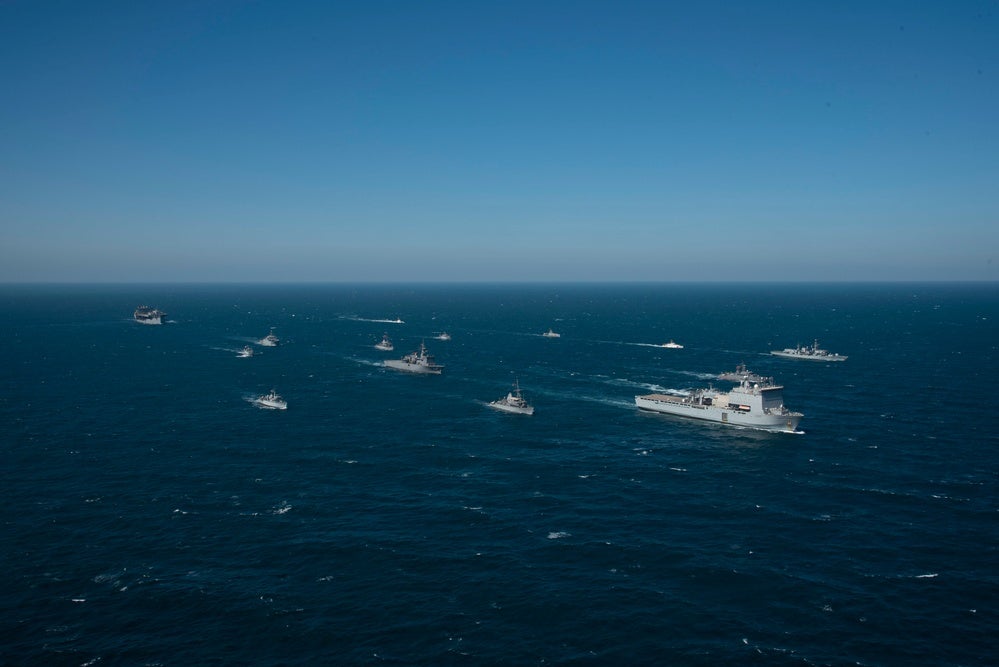Middle East’s Largest Naval Exercise IMX/CE 2022 Comes to an End
The largest international naval exercise in the Middle East, IMX/CE 22, which began in late January with the involvement of 60 countries and international organizations, including Israel, and was led by the United States, came to a close on 17 February in Manama, Bahrain’s capital.
The eighteen-day IMX/CE 2022 exercise, which was led by US Naval Forces Central Command (NAVCENT) and combined with the Cutlass Express (CE 22) exercise sponsored by US Africa Command and managed by US Naval Forces Europe-Africa/US Sixth Fleet (NAVEUR-NAVAF/C6F), was called “the world’s largest unmanned exercise” by NAVCENT.

According to a written statement from the US Naval Forces Central Command (NAVCENT), the exercise, which began in Manama, involved 9,000 personnel and approximately 50 ships from 60 countries and international organizations. The Devil Ray T-38 USVs, Mantas T-12 USVs, MQ-4 Triton UAVs, Switchblade 300 kamikaze drones, GHOST 4 small unmanned aircraft systems (sUAS), and Remus 300 unmanned underwater vehicles (UUV) from the United States participated in the exercise’s unmanned systems portion. In addition, 80 unmanned aerial, surface, and underwater systems from ten countries also participated in the exercise.

The IMX/CE 2022 exercise grouped international naval forces into four geographic combined task forces led by the United Arab Emirates, Egypt, Kenya, and Oman. Parts of the exercise focusing on unmanned systems and artificial intelligence integration were also conducted by a combined task force.
Activities such as testing unmanned systems and artificial intelligence in different training scenarios, sea control (the ability to control the oceans and prevent enemies from accessing them), monitoring all communications above and below the water surface, and mine precautions were carried out as part of the exercise, which aimed to improve the capabilities of the participating countries’ naval forces and strengthen their relations to benefit international order and peace. These exercises took place in the Persian Gulf, the Arabian Sea, the Gulf of Oman, the Red Sea, and the Indian Ocean with the goal of ensuring maritime security in the region by boosting cooperation in the field of security.

It’s also worth noting that the Israeli Navy was a first-time participant in the naval exercise. In a post on his Twitter account, Israeli Army Spokesperson Avichay Adraee noted that Israel took part in the naval exercise for the first time, which began under the leadership of NAVCENT.
With the reorganization of the duties of the US Central Command last year, Israel’s participation is directly related to Israel’s transition to the area of responsibility (AOR) of the US Central Command in the Middle East (CENTCOM) rather than the US European Command (EUCOM). “The Israeli Navy’s participation in the IMX exercise illustrates the growing relationship between our two fleets,” said Israeli Navy Commander David Saar Salama in a written statement. “This relationship is based on fortitude, shared learning and strategic cooperation.”
The exercises are also seen as a challenge by Western and Gulf countries against a joint naval exercise in the north of the Indian Ocean called the “2022 Maritime Safety Belt” by Russia, Iran, and China, as well as gulf tensions caused by the recent increase in missile attacks by Iran or Iran-backed Houthi forces against Saudi Arabia and the UAE. “These skills, developed during IMX/CE 2022, can make a lasting impact on regional security,” said Rear Admiral Jeffrey Spivey, vice commander of the US Sixth Fleet and director of the maritime partnership program NAVEUR-NAVAF.

